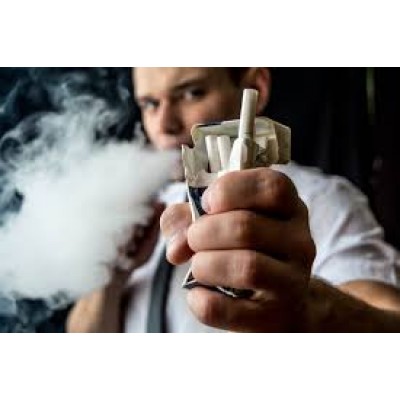
The Evolution of Vaping: A Global Perspective
As the world shifts towards healthier lifestyles, the rise of Vape Pod Kits signifies a notable change in nicotine consumption habits. This text looks at the technological advancements, regulatory landscapes, and cultural shifts surrounding vaping. It provides insights into its evolution from a niche interest to a mainstream phenomenon, focusing on Sweden's influential role.
Emerging Trends in Vaping Technology
The technology behind vaping is rapidly advancing, bringing innovations catering to a wide array of user preferences and needs. One of the most significant trends is the development of more compact and efficient devices. These new-age devices, like vape pod systems, are more aesthetically pleasing and offer enhanced functionality, such as longer battery life and improved heating mechanisms. This progress signifies a shift towards personalization, where users can choose devices that perform well and reflect their style.

The industry is also seeing a surge in the variety of e-liquid flavors and compositions, including options with varying nicotine strengths and those without nicotine at all. This diversity not only caters to the seasoned vaper but also offers a welcoming hand to those looking to reduce their nicotine intake.
Regulatory Landscape: Lessons from Sweden
Sweden's approach to vaping regulation presents a unique case study in balancing public health interests with promoting harm reduction strategies. Unlike many countries implementing stringent controls or outright bans on vaping products, Sweden has taken a more nuanced stance. This approach focuses on regulating the sale and distribution of these products, rather than prohibiting them, to ensure they are safely accessible to adults who are looking for alternatives to traditional tobacco smoking.
One key aspect of the Swedish model is the strict regulation of marketing and advertising of vaping products. By limiting exposure to these products, especially among young people and non-smokers, Sweden aims to prevent the initiation of vaping. Yet, it still provides enough leeway for smokers to be aware of and switch to potentially less harmful alternatives.
Vaping Culture: From Niche to Mainstream
The transition of vaping from a niche hobby to a mainstream phenomenon reflects broader changes in societal attitudes towards smoking and nicotine use. Initially perceived as a subculture with its own set of practices and jargon, vaping has gradually become more accepted and visible in everyday life. This shift is partly due to the growing body of research suggesting that vaping could be a less harmful alternative to traditional cigarette smoking, alongside increasing public awareness of the health risks associated with smoking.
As vaping has moved towards the mainstream, it has also diversified. There's a growing community of enthusiasts who experiment with custom devices and flavors, sharing their experiences and innovations online. Meanwhile, for others, vaping serves a more pragmatic purpose: a means to quit smoking, with various products designed to cater to this need without the complexity or subculture association.
The vaping culture has also seen shifts in demographics, with users spanning a wide age range and backgrounds. This broad appeal has prompted discussions about regulation, health implications, and the future of nicotine consumption. However, the culture around vaping continues to evolve, reflecting ongoing debates about health, lifestyle choices, and personal freedom.
Why has vaping become a trend?
Vaping devices' ease of access and cost-effectiveness contribute significantly to their appeal. Moreover, innovative marketing strategies employed across social media and digital platforms have effectively elevated the allure of vaping, portraying it as a trendy lifestyle choice.
What is the point of vaping?
Vaping helps people stop smoking.















